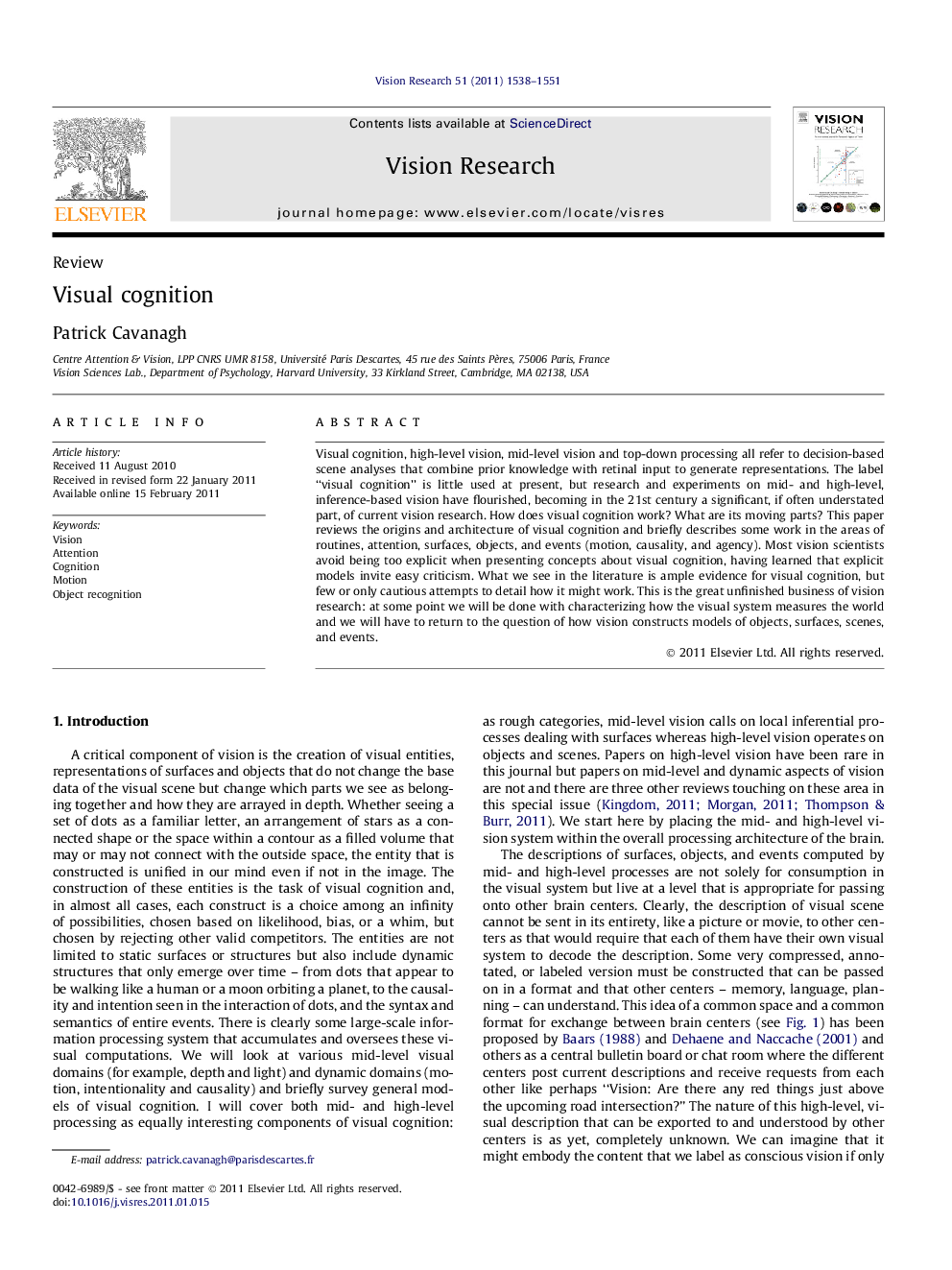| Article ID | Journal | Published Year | Pages | File Type |
|---|---|---|---|---|
| 6203762 | Vision Research | 2011 | 14 Pages |
Visual cognition, high-level vision, mid-level vision and top-down processing all refer to decision-based scene analyses that combine prior knowledge with retinal input to generate representations. The label “visual cognition” is little used at present, but research and experiments on mid- and high-level, inference-based vision have flourished, becoming in the 21st century a significant, if often understated part, of current vision research. How does visual cognition work? What are its moving parts? This paper reviews the origins and architecture of visual cognition and briefly describes some work in the areas of routines, attention, surfaces, objects, and events (motion, causality, and agency). Most vision scientists avoid being too explicit when presenting concepts about visual cognition, having learned that explicit models invite easy criticism. What we see in the literature is ample evidence for visual cognition, but few or only cautious attempts to detail how it might work. This is the great unfinished business of vision research: at some point we will be done with characterizing how the visual system measures the world and we will have to return to the question of how vision constructs models of objects, surfaces, scenes, and events.
Research highlights⺠Review of research in visual cognition over the past 25 years. ⺠Reviews the origins and architecture of visual cognition. ⺠Describes work in the areas of routines, attention, surfaces, and objects. ⺠Describes coding of events as motion, causality, and agency.
